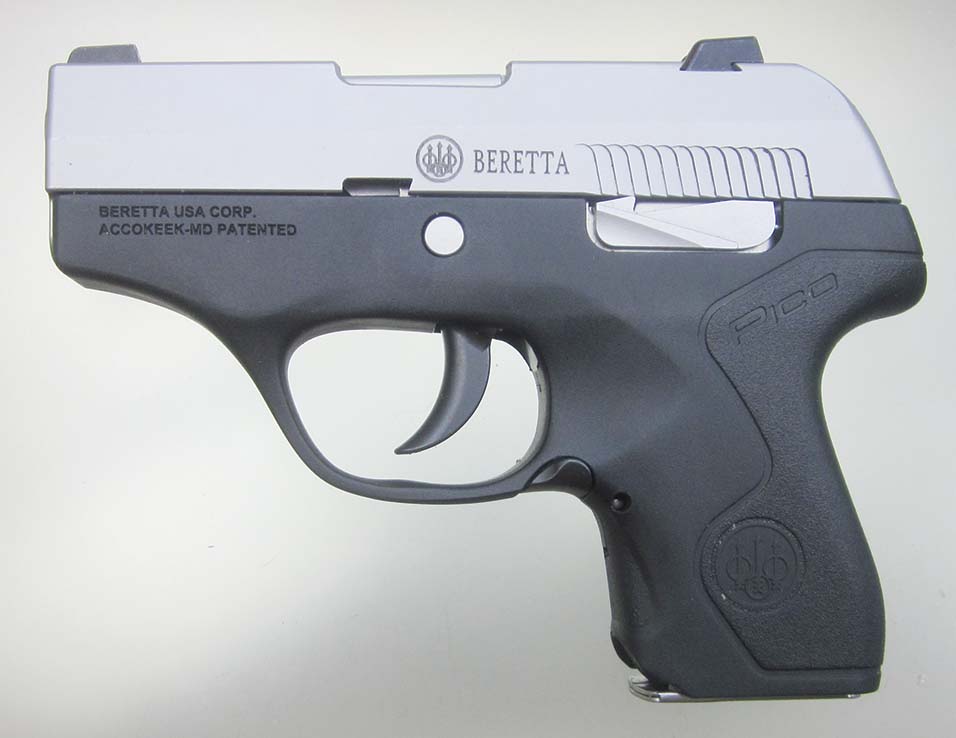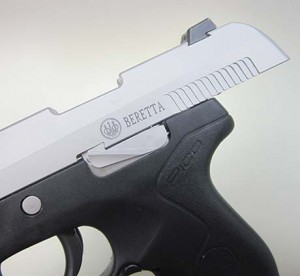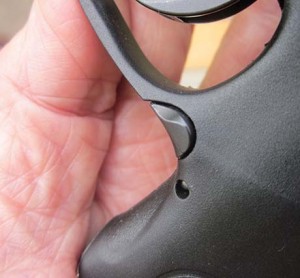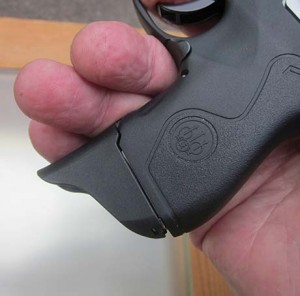 by J.B. Wood | Contributing Editor
by J.B. Wood | Contributing Editor
In the old days, they would refer to a person like this writer as “numbers-stupid.” In modern, non-offensive, politically-correct speech, I’d be “mathematically-challenged.” I have to be careful with things like dimensional data. So, I looked up “Pico” in my dictionary. The definition is a numerical prefix meaning “one trillionth.”
Okay, the Beretta Pico .380 is not that small, but the name is, in a way, appropriate. Let’s look first at the numbers: In side-to-side measurement, it’s only 0.725 of an inch (about 11/l6s). The other figures are also impressive: 5.1 inches in length, a 4-inch height, and a 2.7-inch barrel. And, it weighs just 11.5 ounces.
When you translate all this to deep concealment, well, even in a shirt pocket, it doesn’t show. I have not carefully compared it to all the other little .380 pistols out there, but in some respects, it may well be the winner. With this “flat-ness,” you get a single-column 6-round magazine.
There’s an external slide latch, a hold-open after the last shot. Its projection is minimal, and it’s easier to release the slide by just pulling back a bit and letting go. No manual safety and no need for one, with the DA-Only trigger system.
The trigger action is continuous, with a re-strike capability. The pull is heavy, close to 12 pounds, but it’s quick and smooth.
The trigger itself is nicely rounded, with no annoying serrations. There is no magazine-disconnect safety. So, if a magazine is ever damaged or lost, you can still shoot a chambered round.
Speaking of magazines, you get two with the Pico, both holding six rounds. The one with the flat floor-plate is more concealable, and the spare with the finger extension gives a better hold.
Actually, the overall hold is quite good. The polymer grip-frame is well-shaped, and even with such a slim profile and light weight, the felt-recoil is not bad. A little sharp with high-performance loads, but you can practice with ordinary stuff. By the way, Beretta okays Plus-P loads in the Pico for occasional use.
The recoil is also tamed by a fully-locked falling-barrel system, and two concentric recoil springs. Takedown for cleaning is marvelously simple. With the magazine out, turn the latch on the right side to the left, so its wide slot goes from vertical to horizontal. The slide assembly can then be taken off toward the front. Take out the recoil spring unit and the barrel, and you’ve done it.
The magazine catch is a small lever at the lower rear of the trigger guard, with tabs on both sides. To release, it is pushed downward. Unlike the push-button type, it is never going to be accidentally depressed in a holster by body movement. It’s an excellent design, but it did give me some difficulty.
I found an easy way to operate it. With the thumb and finger of the other hand, pull it down and eject the magazine into the palm. Note to the Beretta designer: Without compromising the width factor, you could extend the tabs to the front edge of the lever. Then, an 80-year-old thumb or finger could move it easily.
On a close-in defense pistol of this type, sights are less important, but these are excellent; square-picture, with three white dots, and easy eye pick-up. Back out an Allen screw, and the rear sight can be moved laterally in its dovetail. On my Pico, not necessary!
At the classic seven-yard encounter distance, standing, two-hand hold, the Pico delivered 4 to 5-inch groups, well-centered. I tried it with several loads. No problems with the Plus-P hollowpoints. It is, after all, a Beretta.
The Pico comes in a nice padded-nylon zipper pouch with elastic pockets inside for the pistol and the spare magazine. Suggested retail price is surprisingly low: Around $400. For more information, visit your local Beretta dealer, or contact: Beretta USA Corp., 17601 Beretta Dr., Accokeek, MD 20607; phone: 301-283-2191.






